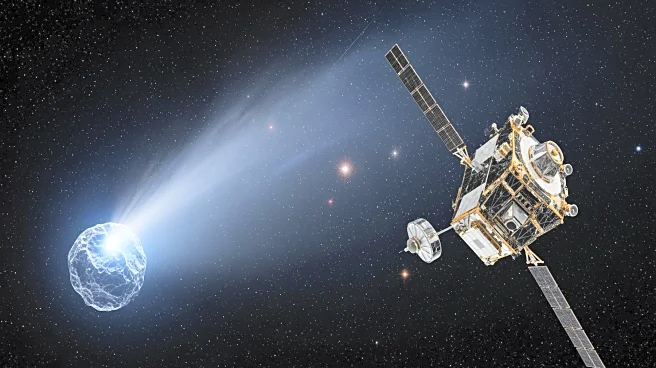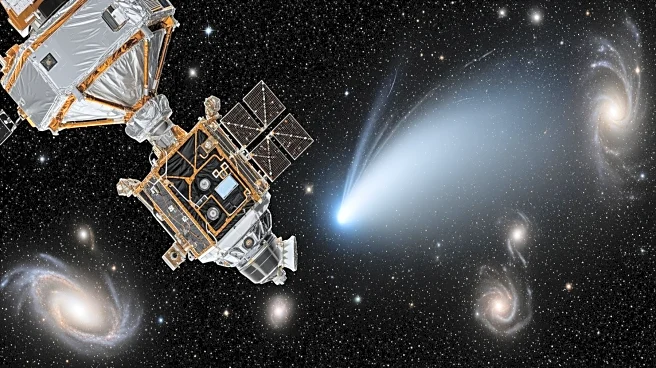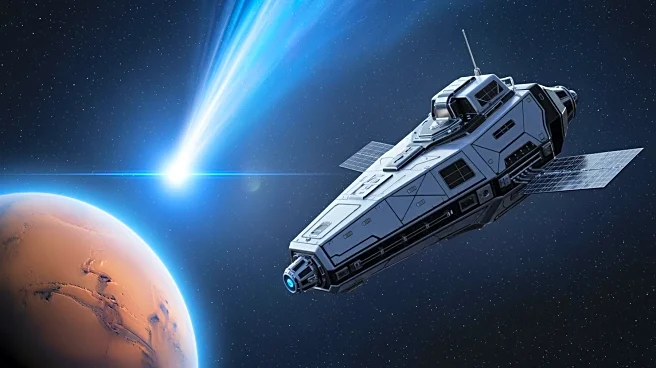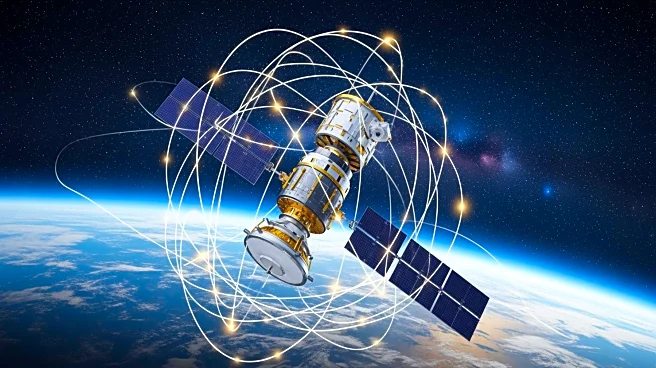What's Happening?
China's Tianwen-1 orbiter has successfully captured an image of the interstellar comet 3I/ATLAS during its Mars flyby. The image, compiled into an animated GIF, showcases the comet's distinctive features,
including its nucleus and surrounding coma. This achievement marks the first attempt to photograph such a distant and dim target, with the comet being significantly dimmer than typical Martian targets. The China National Space Administration (CNSA) utilized a High-Resolution Imaging Camera to capture the comet, despite the challenges posed by its high speed and faint visibility. The image has sparked further studies into the comet's characteristics, with researchers aiming to understand its interstellar origins.
Why It's Important?
The successful imaging of comet 3I/ATLAS by China's Tianwen-1 orbiter is significant for several reasons. It highlights China's growing capabilities in space exploration and its ability to capture and study interstellar objects. The comet, being the third interstellar object recorded in our solar system, presents unique scientific opportunities to understand the nature and behavior of such anomalies. The controversy surrounding NASA's reluctance to release its own images of the comet adds a layer of intrigue, as it raises questions about the transparency and sharing of scientific data. This event could influence international collaboration and competition in space exploration.
What's Next?
The image captured by Tianwen-1 is expected to lead to more in-depth studies of comet 3I/ATLAS, potentially revealing new insights into its composition and behavior. The ongoing debate over NASA's data release may prompt further political and scientific discussions, with calls for greater transparency in sharing space exploration findings. As researchers continue to analyze the comet, there may be new discoveries regarding its interstellar origins and characteristics, which could impact future missions and international space policies.
Beyond the Headlines
The imaging of comet 3I/ATLAS by China's Tianwen-1 orbiter underscores the ethical and scientific implications of data sharing in space exploration. The reluctance of NASA to release its images has sparked discussions about the balance between national interests and global scientific collaboration. This event may lead to a reevaluation of policies governing the dissemination of space exploration data, potentially fostering a more cooperative international approach to studying interstellar phenomena.












